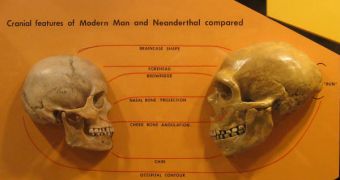A peculiar human statistic shows that most people who taste the chemical known as PTC find the compound very bitter. Conversely, about 25 percent of the population cannot sense it at all, and therefore has no opinion on it. Science explains this by showing that the two groups of people have different taste receptors on their tongues. A new genetic study, conducted on 48,000-year-old Neanderthal fossils, reveals that the genetic variant that caused these differences also existed in our early ancestors, the BBC News informs.
The immediate implication of this discovery is that the genes coding for this ability developed long before Neanderthals and Homo Sapiens became evolutionarily separated. “The non-taster is not something that occurs just in modern populations. It is something that was present at least half a million years ago,” explains Institut de Biologia Evolutiva expert Dr. Carles Lalueza-Fox, in Spain. She says that the taste receptors on our tongues feature a protein that allows them to sense bitter taste. The gene coding for the production of this protein is called TAS2R38.
In people who are unable to taste bitter substances, a recessive variant of the gene causes the formed protein to have a different amino-acid layout, which in turn prevents it from binding to bitter substances. Curious to know how or if the gene evolved over time, the researcher and colleagues isolated and amplified samples of the TAS2R38 from Neanderthal bone fossils, which were found and excavated from the El Sidron site, located in northern Spain. Since the deposit was first discovered, in 2000, more than 11 individuals have been identified and extracted from the premises.
In a study published in the latest issue of the scientific journal Biology Letters, Dr. Lalueza-Fox describes how the gene was identified and boosted, and then analyzed. The investigation revealed that the particular individual to whom the bone belonged could indeed taste bitterness. The science team is positive that no contamination came to the samples, as, immediately after they were excavated under sterile conditions, they were placed in a freezer, with controlled contact to the outside world.

 14 DAY TRIAL //
14 DAY TRIAL //